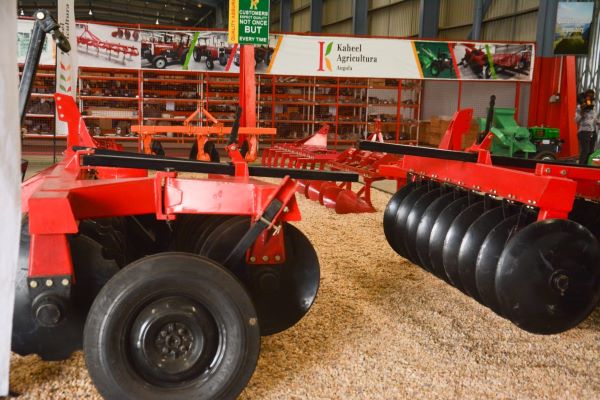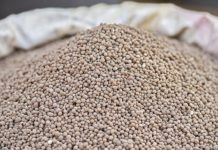
The country seeks to attract various new businesses that can help them process, distribute, and support farm products.
In summary: The Angolan government has set aside hundreds of millions of dollars to help grow key agricultural sectors, such as grain production, promotion of the fisheries sector and the support of animal production.
Already three big agro-investors work in the ZEE creating over 440 agro-related employment opportunities.
In total, the country plans to utilise $3 billion to position itself among the main African agricultural producers in the next five years.
In an effort to spur its economic growth and encourage agro-investors to consider Angola as a venture destination, the Southern Africa country expanded its Luanda-Bengo Special Economic Zone, or ZEE as it is known, to include the Uala Agro-Industrial Reserve.
The ZEE is made up of two reserves, the Viana Reserve that covers over 4700 hectares for the implementation of industrial projects, and the Uala Reserve which is more than 2800 hectares and that is being developed for agribusiness potential.
Developing the Uala Agro-Industrial Reserve ties in with President João Lourenço’s national strategy to diversify the country’s economy and reduce dependency on oil sector revenue.
According to Dr. Manuel Francisco Pedro, the Chairman of the Board of Directors of the ZEE, the country is keen to attract various new businesses that can help it process, distribute, and support farm products.
“We are closely working with the government and private sector to develop the Uala Reserve’s infrastructure such as roads, irrigation, and electrification among others with a view of developing agribusiness potential in the Zone,” said Pedro.
Having been included in the government’s privatization plan, the ZEE’s growth has been done in stages, in terms of attracting new local and foreign investors, for public and private projects. Now the main objective is to stimulate the creation of structures and production units for agribusiness.
This is being done by, for instance, monetizing the Uala Reserve which, according to Pedro, has enormous potential for the development of projects in the agro-industry sector.
“The Angolan government has approved the Planagrão (National Plan for the Promotion of Grain Production) with about $500 million per year and an equivalent amount for infrastructures and access to the production areas for implementation throughout the country. This is in addition to the Planapescas (National Plan for the Promotion of Fisheries) in which the government will channel $300 million to further develop this industry. The government is also working on a plan for livestock that will also include $300 million over the next three years to support animal production and derivatives,” Pedro explained.
Agribusiness, the next big bet
Even as the Angolan government anticipates economic growth of 3.5% between 2023 and 2027, to be driven by economic diversification, the country places agribusiness as the next big bet for the next five years.
“The government has set up financing lines from the Development Bank of Angola which will enable the country to create agro-livestock units and agricultural product processing industries. In total $3 billion will be used to position Angola among the main African agricultural producers,” said Pedro.
He says the country has some 58 million hectares of highly fertile arable land which allows for at least two annual harvests and that the ZEE offers ample space for the installation of agro-industrial units.
“In terms of farm productions, we have many options for our sector investors ranging from fruit and vegetables to land with waterways for livestock,” he said.
ZEE’s established agro-companies
Already, there are several established enterprises involved in the agricultural products industry and food processing within the ZEE.
One is Kaheel Agriculture Angola, an industrial unit that assembles Massey Ferguson tractors and agricultural implements. Kaheel was inaugurated into the ZEE in 2020 and currently can assemble 10 to 15 tractors per day with 300 workers. This is in addition to launching a training centre located within the ZEE.
Another is Quinta de Jugais, a meat processing plant occupying 8000m2 in the ZEE, that employs 140 workers since its inauguration in February 2022. With its cutting-edge technology, Quinta produces 30 tons of charcuterie per month that it sells to the Angolan consumer market.
Horta Verde developed the first hydroponics production centre in Angola using hydroponic techniques for cultivating plants without soil over an area of 3600m2. Using the latest farming technology, Horta is now producing various aromatic herbs and tomatoes with high freshness criteria.
“There are currently 166 companies in the ZEE making it a large job-generating portal with 7712 employees that include service providers with the vast majority being Angolan citizens,” said Pedro.
Generally, the ZEE investors come from China, Portugal, Eritrea, the United Kingdom, France, Spain, Lebanon, Brazil, India, Cuba, Turkey, and the United Arab Emirates.
He added, “Our total revenue in the first quarter of 2023 was over $4 million. We also received 10 new investment proposals in this first quarter, and four projects are already in implementation. Our analysts have forecasted these 10 new proposals will have a total investment of over US $ 60 million.”
Other than agriculture, mining, energy, telecommunication, and construction sectors are also ripe for investment.
Investor incentives
To cope with the existing competition from other economic zones in the region and the continent, Angola offers an attractive range of tax incentives and investment laws that support foreign investments.
“We have a very competitive offering, such as the lowest operational costs in the Southern Africa region with a reliable electricity supply, potable water, and world-class infrastructure,” said Pedro.
An example of the world-class infrastructure is the almost completed New Luanda International Airport bordering the ZEE placing it at the centre of a transportation hub for people and goods.
“To help both foreign and local investors have an easy time setting operations within the zone, in 2021, we set up a special unit, Guiché de Apoio ao Investidor (GAI) or Investor Support Office to simplify all bureaucracies involved in setting up a business.”
This one-stop shop brings all of Angola’s key public administration departments into one convenient building at the ZEE and offers help with everything from taxes, banking, and licenses to municipal accounts.
ZEE agriculture products target market
While leveraging on African Continental Free Trade Area (AfCFTA) which is poised to bring some 1.2 billion consumers for ZEE agriculture products, the country is also eying the SADC region (340 million people), and the rest of the world.
“One of the many reasons why we are transitioning into a Free Zone is because we want the ZEE to have privileged relations in the future common market of Africa – AfCTA,” said Pedro.








